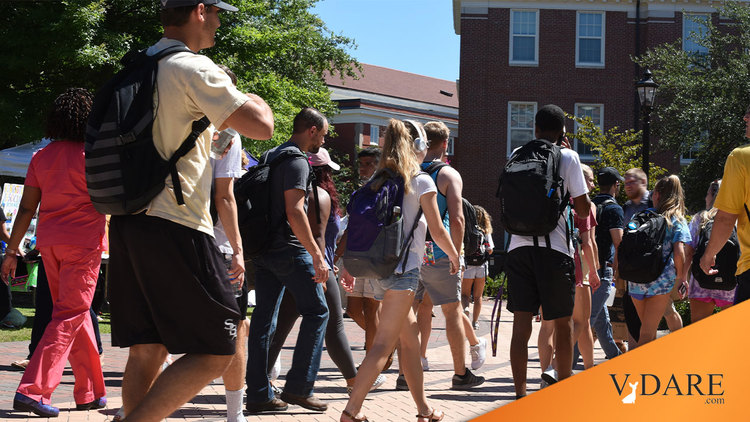Why do few elite colleges respond to increasing demand by expanding the size of freshmen classes? Back in 2013, I tracked the remarkable stability of number of undergraduates enrolled at Harvard, Yale, Princeton, Stanford and MIT over recent decades, a time during which their number of applicants, domestic and foreign, skyrocketed. I concluded:
Perhaps the defining activity of American life since the 1960s has been elites conspiring to become more elite. While it’s fun to point out the hypocrisy of the most successful, it’s also worth noting that maybe they are on to something in their desire for quality over quantity in people.
My alma mater, Rice U., isn’t in the HYPSM stratosphere, but it's the leading private college in Texas. And, like a lot of things in Texas, it’s been growing.
Undergraduate enrollment was only about 2,700 when I graduated in 1980. Then, it was the smallest college in the country to play big time football: e.g., Rice hosted Heisman Trophy winners Earl Campbell and Billy Sims. The Division I football team comprised approaching 3% of the student body, which made it harder to hide the football team in the overall student body than at, say, Texas. This meant that Rice, an academically rigorous STEM-oriented college, had to both have higher academic standards for football players (making recruiting harder) and more concerns about them diluting the quality of the student body.
Enlarging the student body better hides jocks and big donors’ dumb kids in the bottom 25% of the SAT score range, below what the USNWR reports.
Undergrads at Rice now number over 4,000, and the Board recently announced plans to expand to 4800 undergrads by 2025, which would be 80% more than when I graduated in 1980. Rice will also expand its number of grad students, for a total campus of 9000, compared to 3500–4000 in my day.
I wonder what distinguishes the private colleges that choose to grow from those that don’t?
One guess is acreage. Rice has an ample 300-acre campus in a nice part of Houston. (In contrast, UCLA has 45,000 students, grad and undergrad, on 420 acres.)
Much of Rice’s acreage was devoted when I was there to the huge football stadium’s giant parking lot. And that lot only fills up when Texas or Texas A&M plays Rice. In pro-growth Texas, it’s not hard to get the permits to put up more buildings on campus.
In contrast, Harvard’s 209-acre main campus in Cambridge seems a little cramped already, relative to the fame and wealth of the school. And new construction projects on the other side of the Charles River on a 48 acre site in Boston’s Allston neighborhood have been running up Big Dig–type costs during Harvard’s 21-year travail to get it built.
Maybe it’s a general regional attitude about growth. Massachusetts has been much more elitist and restrictive since the late 1960s, while Texas remains go-go expansive.
My guess is that Yale, Princeton, Stanford and MIT keep their eye on Harvard. If Harvard announced it was adding 50% more students, then YPSM would too. But Harvard probably figures: why bother, we’re #1 as it is and if our four biggest rivals also expanded, that would cause us some dilution issues?
In contrast, Rice can do what it wants without automatically setting off a nationwide trend.
Still, Rice growing 80% in 45 years is not a breakneck rate of expansion.
Commenter Engineer adds:
Rice is interesting, I’d like to see internal strategic growth plan. I was on the campus last year; available space is mostly built out now. They are across the street from the largest medical center in the world – not growing that way. From a REIT disclosure a few years ago, Rice owns much/most of the [adjacent] Village shopping center out to Kirby. I would speculate they have been buying the houses to the north for decades as they come on the market.
I was talking recently with an alum about how long the stadium would survive, given the more limited interest in football among younger alums and the tertiary conference where Rice now plays. I give the program and the stadium 10-15 years; it’s demise will free up more space on campus.













